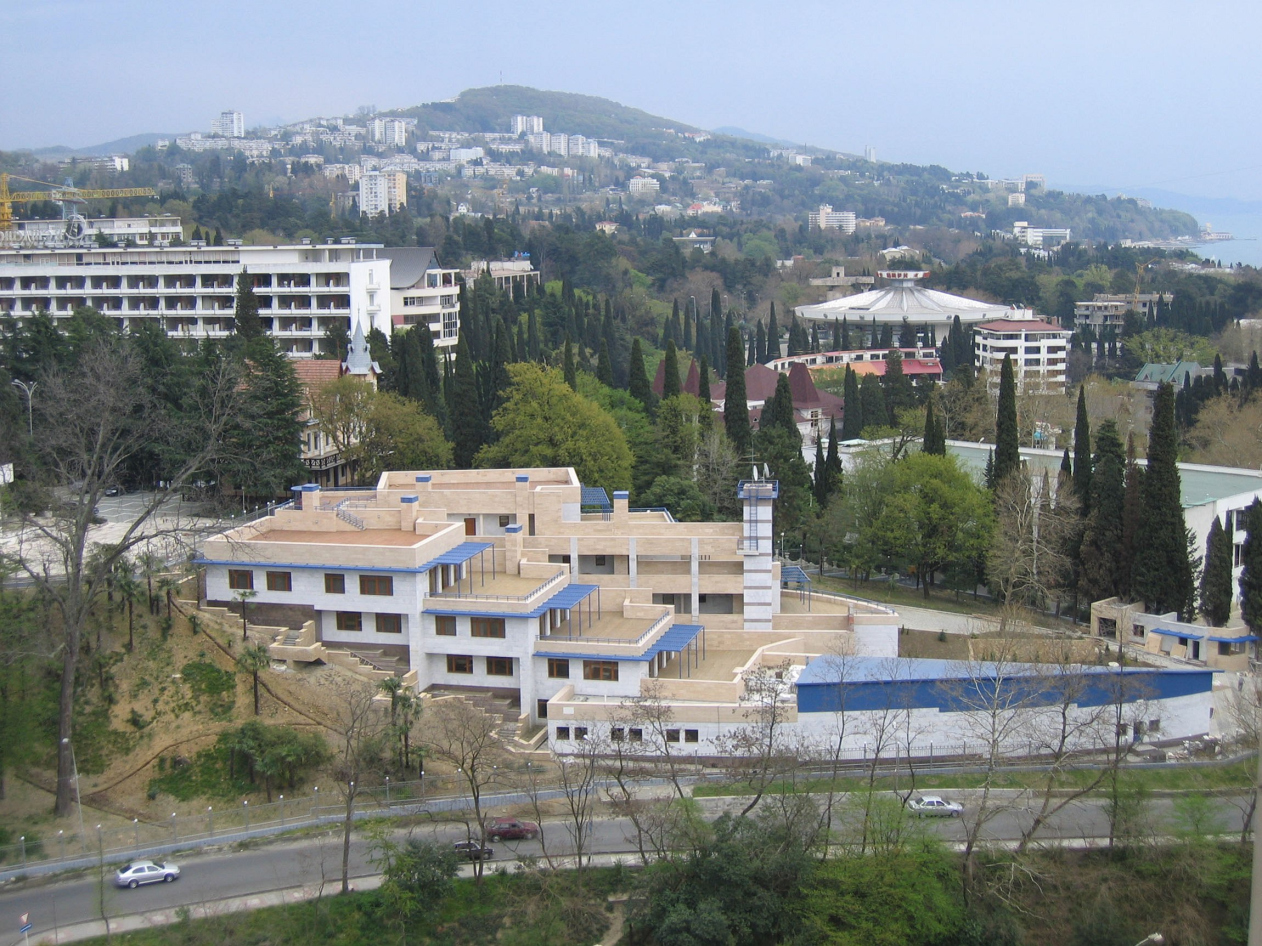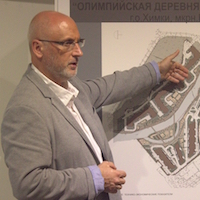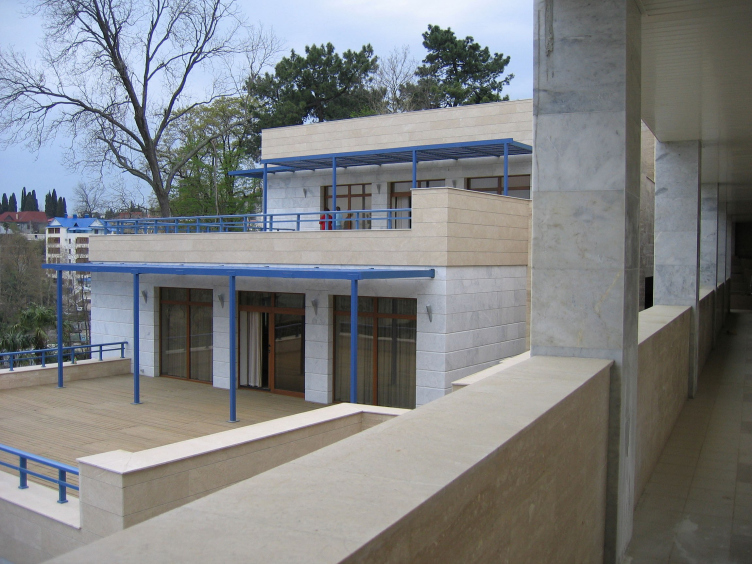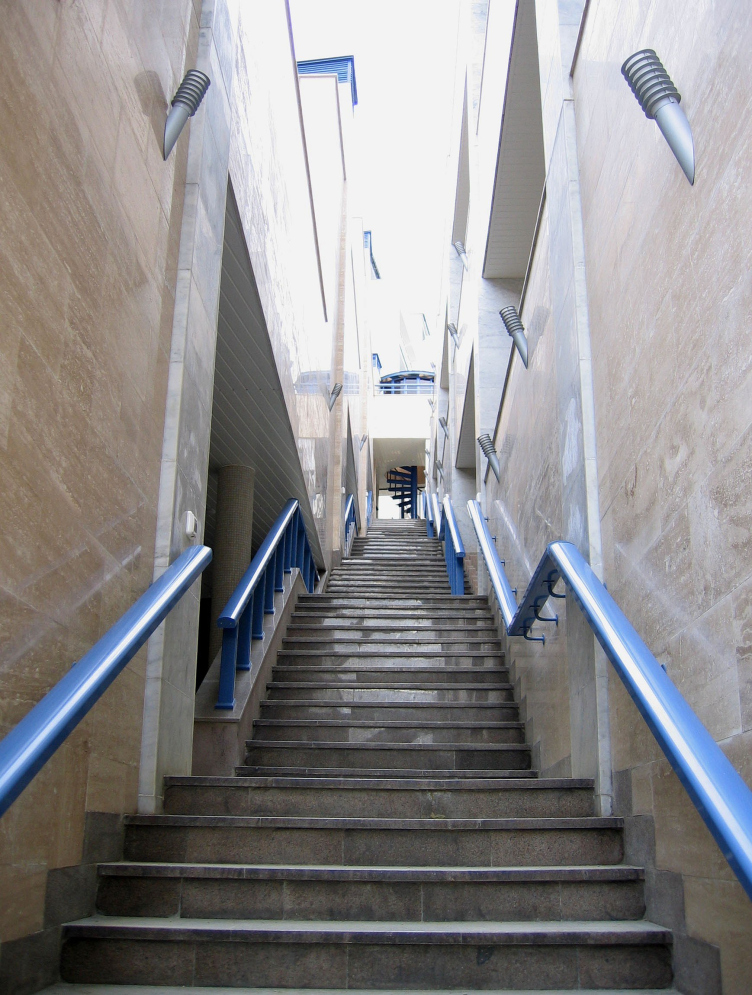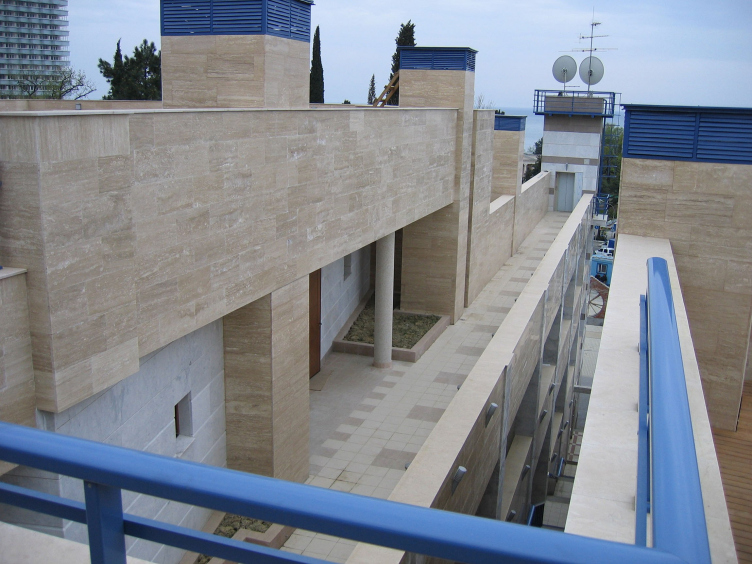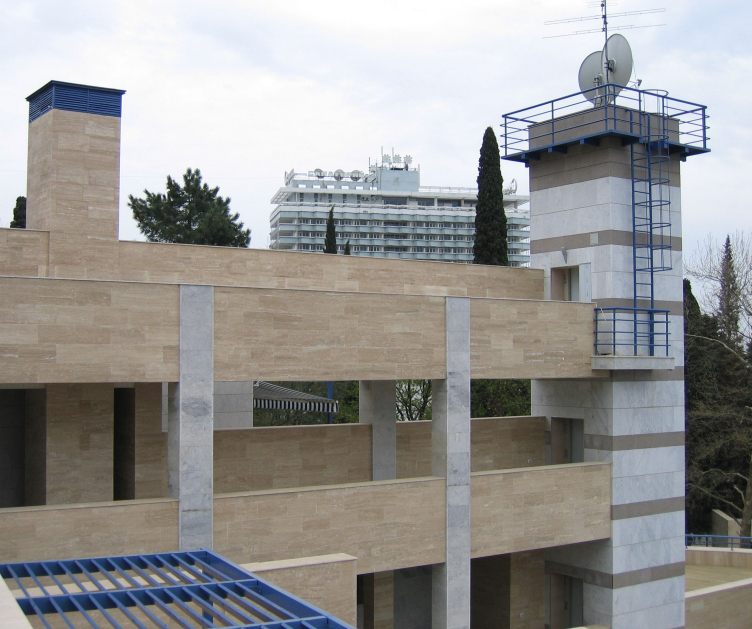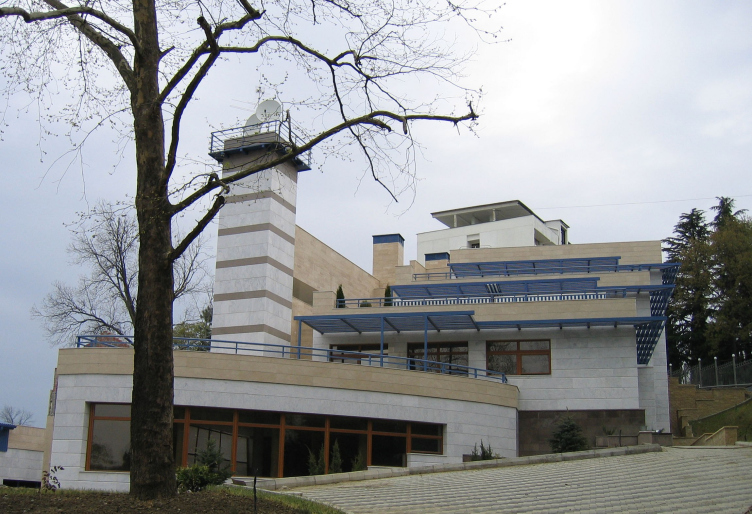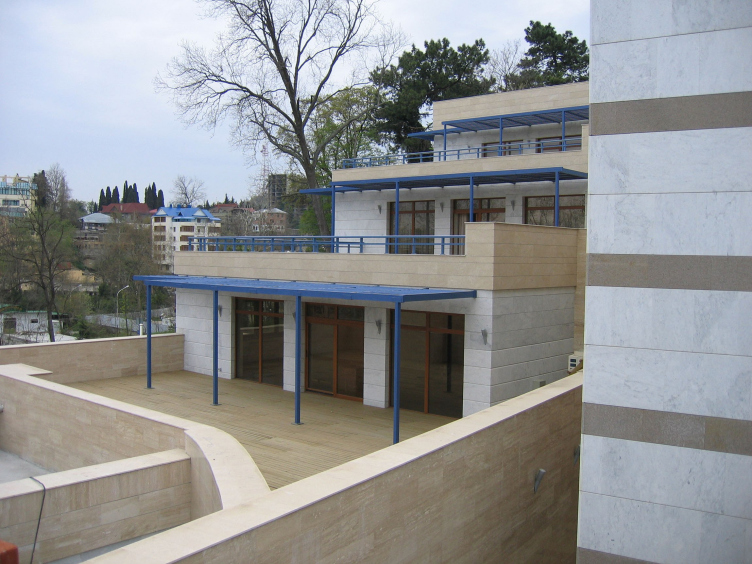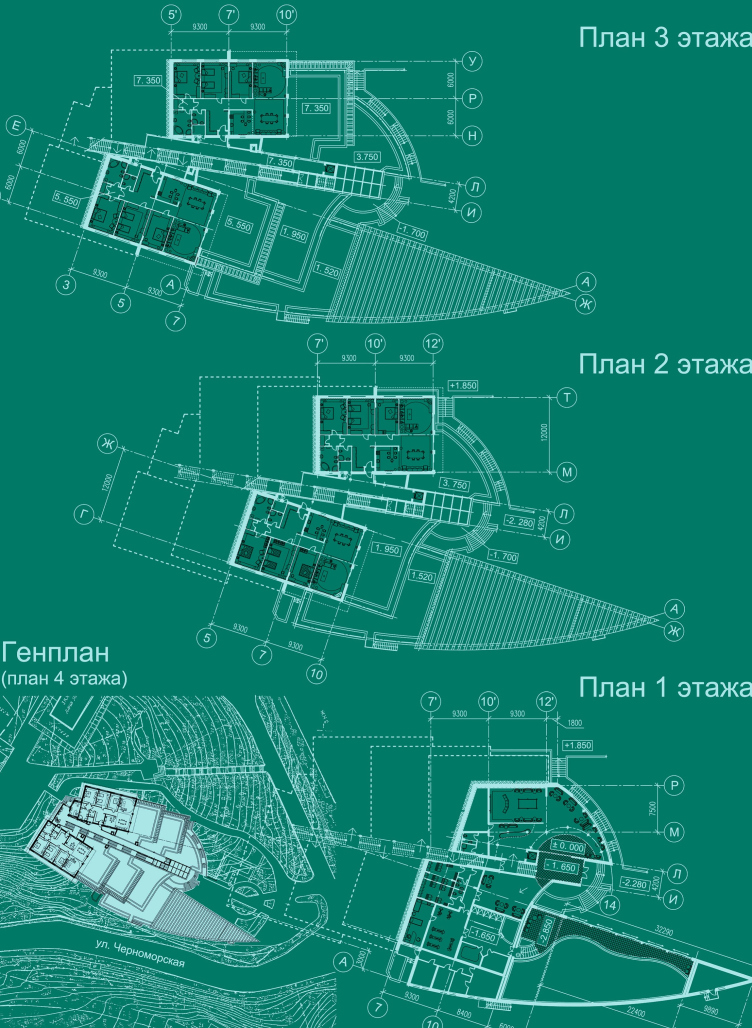По-русски Terraces go down to the sea
Private family type boarding house built in Sochi under Vladimir Bindeman’s project is an example of a quality and an elegant resort architecture, lack of which has been acute in this city over the over recent years. While the future Winter Olympics host is being hastily built over with large-scale residential, hotel and sports complexes, Vladimir Bindeman and his co-author Natalia Kotova have implemented their project in the very heart of the famous resort, it organically combines simplicity and comfort, refined laconism of forms and complexity of design solutions.

Written by:
Anna Martovitskaya
